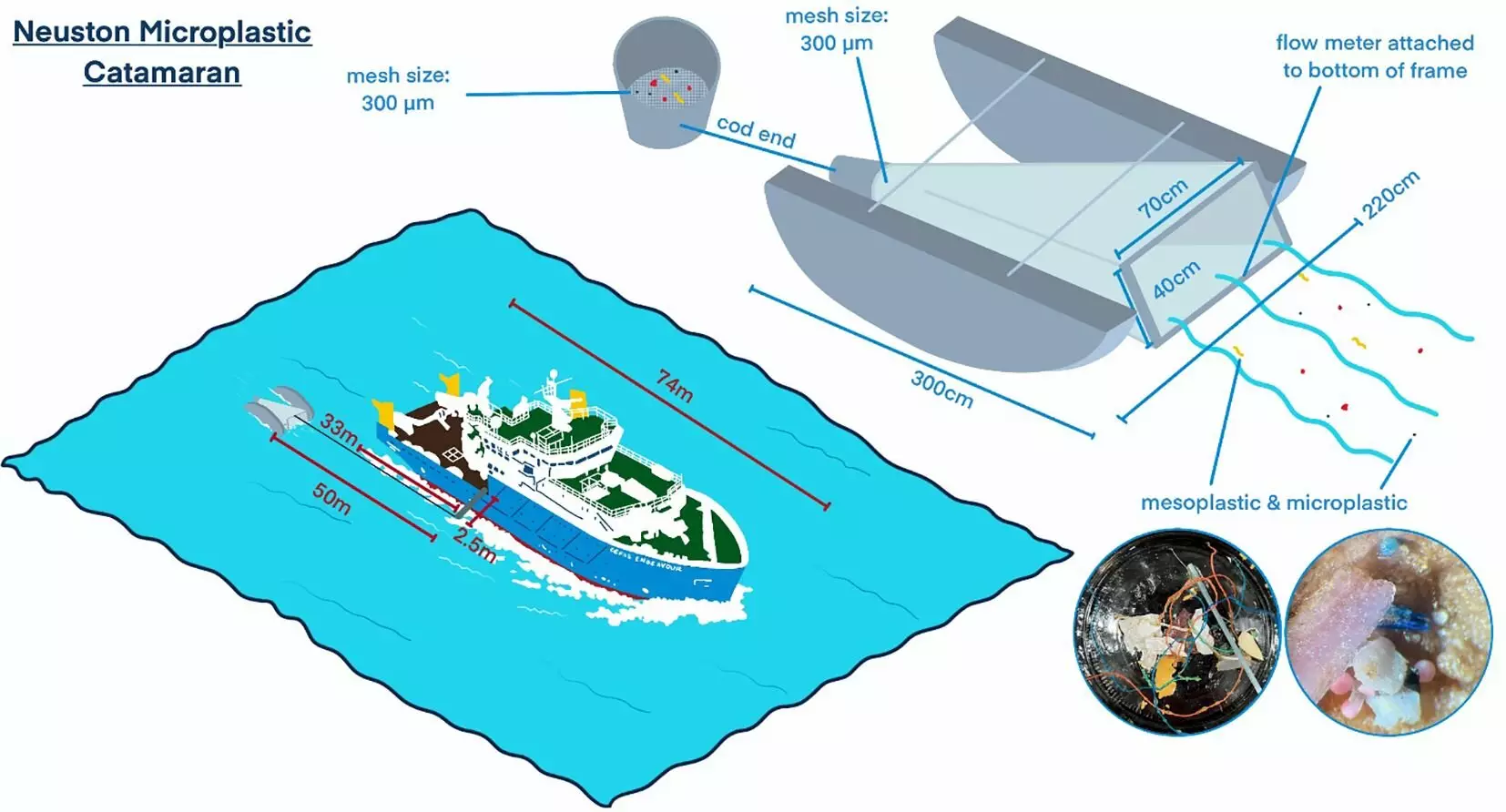Microplastic pollution represents one of the most alarming environmental challenges of our time, imperceptibly infiltrating the world’s oceans and profoundly impacting marine ecosystems. While the visual motif often centers around picturesque beaches marred by visible plastic debris or marine life ensnared by larger flotsam, the reality is that the bulk of microplastics lies hidden beneath the waves. Recent research, notably that from the Frontiers in Marine Science, has delved into the intricacies of this phenomenon, uncovering clandestine reservoirs of microplastics in the North Sea.
Each year, an estimated 12.7 million metric tons of plastic waste enter the oceans, stemming from terrestrial sources such as rivers and industrial activities, as well as from maritime operations like fishing and shipping. However, much of this input escapes the eye, leading to an underappreciated understanding of microplastics’ pervasive distribution and the consequent marine health implications.
In a pioneering study, researchers led by Dr. Danja Hoehn at the Center for Environment, Fisheries and Aquaculture Science in the U.K. surveyed microplastic concentrations in 2022 using an innovative tool: the Neuston Microplastic Catamaran. This specialized vessel equipped with a mechanical flow meter and fine mesh was employed to capture plastic particles on the water’s surface, identifying hotspots where microplastics first accumulate post-entry into aquatic ecosystems.
The findings revealed significant concentrations of microplastics in the Southern Bight of the North Sea, with peaks reaching over 25,000 particles per square kilometer, compared to lower levels in adjacent areas. The composition of these particles provided insight into everyday plastic usage: polyethylene accounted for 67% of the microplastic types discovered, followed by polypropylene and polystyrene. This data accentuates how common consumer products directly contribute to marine littering. Furthermore, the persistence of microbeads—banned in the U.K. since 2018—underscores how plastic pollution transcends legal boundaries through ocean currents, carrying debris across national waters.
The ecological implications of microplastic pollution are profound. Marine species, ranging from the smallest plankton to the largest whales, can ingest these plastic particles, leading to physical blockages, reduced feeding efficiency, and potential toxicological effects. The microplastics act not just as pollutants themselves, but they can also carry harmful chemicals and pathogens into the marine food web, compounding the health risks to marine organisms and humans alike.
Spatial distribution analyses highlighted specific areas, such as off the coast of East Anglia, as notable microplastic hotspots. This spatial variability underscores the importance of understanding ocean currents and their role in distributing plastic waste across extensive marine regions. Despite the alarming concentrations recorded, it’s essential to recognize that the levels in the North Sea remain considerably lower than those observed in other global hotspots, subjecting various ecosystems to different intensities of plastic pollution.
As awareness of plastic pollution proliferates, various national and international frameworks have emerged to address this pressing issue. The U.K.’s Marine Strategy seeks to develop indicators for microplastics in marine sediments, while the North-East Atlantic Environmental Strategy emphasizes measures to curtail litter inputs. The ambitious goal set forth by the UN Environmental Agency aims for a legally binding agreement to eliminate plastic pollution by 2040, highlighting the urgency of tackling this growing crisis.
With global demand for plastics soaring to over 400 million tons annually, understanding the pervasive nature of plastic contamination is more crucial than ever. Through comprehensive research and robust public engagement, strategies can be formulated to curtail plastic production, enhance waste management practices, and most importantly, protect our oceans for future generations.
The crisis of plastic pollution requires a multifaceted approach incorporating scientific research, community engagement, and international cooperation. As the North Sea reveals hidden sinks of microplastics, it serves as a pivotal case study in the larger narrative of ocean health. Only through sustained efforts and enhanced understanding can we hope to reclaim our oceans from the pervasive grip of microplastic pollution.


Leave a Reply